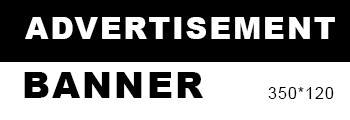When it comes to booklet printing, the choice of paper weight is a crucial factor that can significantly impact the overall quality, durability, and aesthetic appeal of the final product. Whether you are creating a marketing brochure, a company report, or a personal project, understanding the nuances of paper weight can help you make informed decisions that align with your goals. In this article, we will explore the various aspects of paper weight, its implications for booklet printing, and how to select the right weight for your specific needs.
Understanding Paper Weight
Paper weight is typically measured in grams per square meter (gsm) or pounds (lb), depending on the region. In the United States, paper weight is often expressed in pounds, while most other countries use the gsm measurement. For booklet printing, common paper weights range from 70 lb (approximately 105 gsm) to 100 lb (approximately 150 gsm) for the interior pages, while covers typically range from 80 lb (approximately 120 gsm) to 130 lb (approximately 350 gsm).
The Importance of Paper Weight in Booklet Printing
- Durability and Longevity: Heavier paper tends to be more durable and resistant to wear and tear. If your booklet will be handled frequently or needs to withstand various environmental conditions, opting for a heavier weight can enhance its longevity.
- Print Quality: The weight of the paper can affect how ink is absorbed and how colors appear. Heavier papers often provide better ink saturation, resulting in sharper images and more vibrant colors. This is particularly important for booklets that rely heavily on visuals, such as product catalogs or promotional materials.
- Feel and Perception: The tactile experience of a booklet can influence how it is perceived by the audience. A heavier paper weight can convey a sense of quality and professionalism, making it an ideal choice for corporate reports or high-end marketing materials.
- Cost Considerations: While heavier paper may offer advantages in terms of quality and durability, it is essential to consider your budget. Heavier paper typically costs more, so it is crucial to balance quality with affordability based on your project requirements.
Selecting the Right Paper Weight for Your Booklet
When determining the appropriate paper weight for your booklet, consider the following factors:
- Purpose of the Booklet: Identify the primary purpose of your booklet. Is it meant to inform, persuade, or entertain? For instance, a high-quality marketing brochure may benefit from a heavier weight to enhance its visual appeal, while an internal report may not require the same level of durability.
- Target Audience: Consider who will be reading your booklet. A professional audience may appreciate a more substantial paper weight, while a casual audience may not notice the difference as much.
- Printing Method: Different printing methods can yield varying results based on paper weight. For example, digital printing often works well with lighter weights, while offset printing can accommodate heavier stocks. Consult with your printing service to determine the best match for your chosen method.
- Binding Style: The binding method you choose can also influence your paper weight selection. For example, saddle stitching may require lighter paper to ensure that the booklet folds and binds correctly, while perfect binding can accommodate heavier stocks.
- Design Considerations: The design of your booklet, including the number of pages and layout, can impact your paper weight choice. A thicker booklet may require lighter paper to avoid excessive bulk, while a thinner booklet can utilize heavier stock without compromising its overall appearance.
Common Paper Weight Recommendations
- 70 lb (105 gsm): Suitable for internal documents, manuals, or booklets with minimal graphics.
- 80 lb (120 gsm): A versatile choice for general-purpose booklets, offering a balance between durability and cost.
- 100 lb (150 gsm): Ideal for high-quality marketing materials, catalogs, or any booklet that requires a premium feel.
- 130 lb (350 gsm): Best for covers or high-end presentations, providing a sturdy and professional appearance.
Conclusion
Choosing the right weight paper for booklet printing is a multifaceted decision that requires careful consideration of various factors, including purpose, audience, printing method, and design. By understanding the implications of paper weight and how it affects the overall quality and perception of your booklet, you can make informed choices that enhance your project's success. Whether you opt for a lightweight stock for a casual brochure or a heavier paper for a professional report, the right paper weight will ensure that your booklet leaves a lasting impression.

